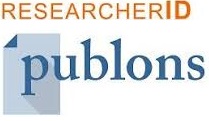Prevalence Of Antibiotic Use In Children Aged 0-7 In Primary Care
Abstract
Introduction – This paper presents a general overview of the importance of antibiotic use, the issue of antibiotic resistance, the side effects of antibiotics, their benefits, and the different types of antibiotic use. Antibiotics are powerful medications that save the lives of many patients treated for bacterial infections. They are effective when used according to the conditions prescribed by the physician, but along with their benefits, they also have side effects.
The purpose of this study is to understand the prevalence of antibiotic use in children aged 0-7 in primary care. The aim of the research was to identify the health issues these patients were diagnosed with and the types of antibiotics they were treated with.
Methodology – This is a descriptive study aimed at illustrating the different types of antibiotics used by patients treated at the Family Health Center in Arbana, Prizren. Data collection included sources such as medical records, visit protocols, and archives, which documented the cases and treatments provided to patients during the period from January to September 2024.
Results – The study results provided significant information regarding the prevalence of antibiotic use in children aged 0-7. Comparing theory with practical results helped us understand the importance of antibiotic use, the health problems faced by patients in this age group, and the most commonly used antibiotics.
Conclusions – Based on the study findings, we concluded that there is a high level of antibiotic use, and there is still a belief that antibiotics are necessary to combat health problems. The most common health issues treated at the Family Health Center in Arbana included acute bronchitis, acute tonsillitis, acute pharyngitis, nausea, and diarrhea. The most commonly used antibiotics for these patients were ceftriaxone, opsen, cefaclor, and ceftinex.
Keywords
Full Text:
PDFReferences
. Aslam, B., Hameed, A., & Asghar, M. (2021). Antibiotic resistance: One health one world outlook. Frontiers in Cellular and Infection Microbiology, 11, 1–20. https://doi.org/10.3389/fcimb.2021.760577
. BYJU'S. (2024). How do antibiotics help humans fight with their diseases? Retrieved October 5, 2024, from https://byjus.com/chemistry/antibiotics-types-and-side-effects/
. Bay Biosciences. (2023). Types of antibiotics. Retrieved October 7, 2024, from https://baybiosciences.com/types-of-antibiotics/
. Cleveland Clinic. (2024). Antibiotics. Retrieved October 8, 2024, from https://my.clevelandclinic.org/health/treatments/16386-antibiotics
. Healthline Media. (2023). What to know about antibiotics. Retrieved October 6, 2024, from https://www.medicalnewstoday.com/articles/10278#what-are-they
. Gould, K. (2016). Antibiotics: From prehistory to the present day. Journal of Antimicrobial Chemotherapy, 71(3), 572-575. https://doi.org/10.1093/jac/dkv405
. Laxminarayan, R., Wahl, B., Dudala, S. R., & Gandra, S. (2013). Antibiotic resistance—the need for global solutions. The Lancet Infectious Diseases, 13, 1057–1098. https://doi.org/10.1016/S1473-3099(13)70318-9
. Leekha, S., Terrell, C. L., & Edson, R. S. (2011). General principles of antimicrobial therapy. Mayo Clinic Proceedings, 86(2), 156-167. https://doi.org/10.4065/mcp.2010.0582
. McCloskey, A. P., Malabar, L., McCabe, P. G., Gitsham, A., & Jarman, I. (2023). Antibiotic prescribing trends in primary care 2014–2022. Research in Social and Administrative Pharmacy, 19(8), 1193-1201. https://doi.org/10.1016/j.sapharm.2022.06.007
. Mijović, B., Aćimović, J., Đaković Dević, J., Kralj, J., Lučić Samardžija, V., Djermanović, M., Milić, M., Vujić-Aleksić, V., Perić Simić, S., & Joksimović, B. (2022). Knowledge, attitudes, and practices of parents and pediatricians regarding antibiotic use among children: Differences in relation to the level of education of the parents in the Republic of Srpska, Bosnia and Herzegovina. Antibiotics, 11(10), 1325. https://doi.org/10.3390/antibiotics11101325
. Mutagonda, R. F., Gambo, R., & Lwande, W. (2022). Determinants of misuse of antibiotics among parents of children attending clinics in regional referral hospitals in Tanzania. Scientific Reports, 12, 1–11. https://doi.org/10.1038/s41598-022-09295-8
. Michael, C. A., Dominey-Howes, D., & Labbate, M. (2014). The antimicrobial resistance crisis: Causes, consequences, and management. Frontiers in Public Health, 2, 1–8. https://doi.org/10.3389/fpubh.2014.00045
. Meng, L., Mui, E., Holubar, M. K., & Deresinski, S. C. (2017). Comprehensive guidance for antibiotic dosing in obese adults. Pharmacotherapy, 37(11), 1415-1431. https://doi.org/10.1002/phar.200303
. Mazińska, B., Strużycka, I., & Hryniewicz, W. (2017). Surveys of public knowledge and attitudes regarding antibiotics in Poland: Did the European Antibiotic Awareness Day campaigns change attitudes? PLoS ONE, 12(3), e0172146. https://doi.org/10.1371/journal.pone.0172146
. Merck & Co. (2024). Overview of antibiotics. Retrieved October 5, 2024, from https://www.msdmanuals.com/home/infections/antibiotics/overview-of-antibiotics
. Pankey, G. A., & Sabath, L. D. (2004). Clinical relevance of bacteriostatic versus bactericidal mechanisms of action in the treatment of Gram-positive bacterial infections. Clinical Infectious Diseases, 38(6), 864-870. https://doi.org/10.1086/382265
. NIHR Evidence. (2024). How to reduce antibiotic use in primary care. https://doi.org/10.3310/nihrevidence_62286
. Nemeth, J., Oesch, G., & Kuster, S. P. (2015). Bacteriostatic versus bactericidal antibiotics for patients with serious bacterial infections: A systematic review and meta-analysis. Journal of Antimicrobial Chemotherapy, 70(2), 382-395. https://doi.org/10.1093/jac/dku477
. O’Neill, J. (2018). Tackling drug-resistant infections globally: Final report and recommendations. https://amr-review.org/sites/default/files/160518_Final%20paper_with%20cover.pdf
. Oikonomou, M. E., Gkentzi, D., Karatza, A., Fouzas, S., Vervenioti, A., & Dimitriou, G. (2021). Parental knowledge, attitude, and practices on antibiotic use for childhood upper respiratory tract infections during the COVID-19 pandemic in Greece. Antibiotics, 10(7), 802. https://doi.org/10.3390/antibiotics10070802
. Onufrak, N. J., Forrest, A., & Gonzalez, D. (2016). Pharmacokinetic and pharmacodynamic principles of anti-infective dosing. Clinical Therapeutics, 38(9), 1930-1947. https://doi.org/10.1016/j.clinthera.2016.07.005
. Padget, M., Guillemot, D., & Delarocque-Astagneau, E. (2016). Measuring antibiotic consumption in low-income countries: A systematic review and integrative approach. International Journal of Antimicrobial Agents, 48(1), 27-32. https://doi.org/10.1016/j.ijantimicag.2016.02.013
. Patel, P., Wermuth, H. R., & Calhoun, C. (2023). Antibiotics. In StatPearls [Internet]. Treasure Island (FL): StatPearls Publishing; 2024 Jan. Available from https://www.ncbi.nlm.nih.gov/books/NBK535443/
. Sy, S. K., Zhuang, L., & Derendorf, H. (2016). Pharmacokinetics and pharmacodynamics in antibiotic dose optimization. Expert Opinion on Drug Metabolism & Toxicology, 12(1), 93-114. https://doi.org/10.1517/17425255.2015.1041970
. Tham, D. W. J., Abubakar, U., & Tangiisuran, B. (2020). Prevalence and predictors of antibiotic use among children visiting the Emergency Department in a tertiary hospital in Malaysia. European Journal of Pediatrics. https://doi.org/10.1007/s00431-019-03560-z
. The Johns Hopkins University. (2024). Antibiotics. Retrieved October 6, 2024, from https://www.hopkinsmedicine.org/health/wellness-and-prevention/antibiotics
. Thomson, K., Berry, R., Robinson, T., Brown, H., Bambra, C., & Todd, A. (2020). An examination of trends in antibiotic prescribing in primary care and the association with area-level deprivation in England. BMC Public Health, 20, 1-9. https://doi.org/10.1186/s12889-020-08074-8
DOI: http://dx.doi.org/10.52155/ijpsat.v47.1.6690
Refbacks
- There are currently no refbacks.
Copyright (c) 2024 Veron Ismajli

This work is licensed under a Creative Commons Attribution 4.0 International License.



















